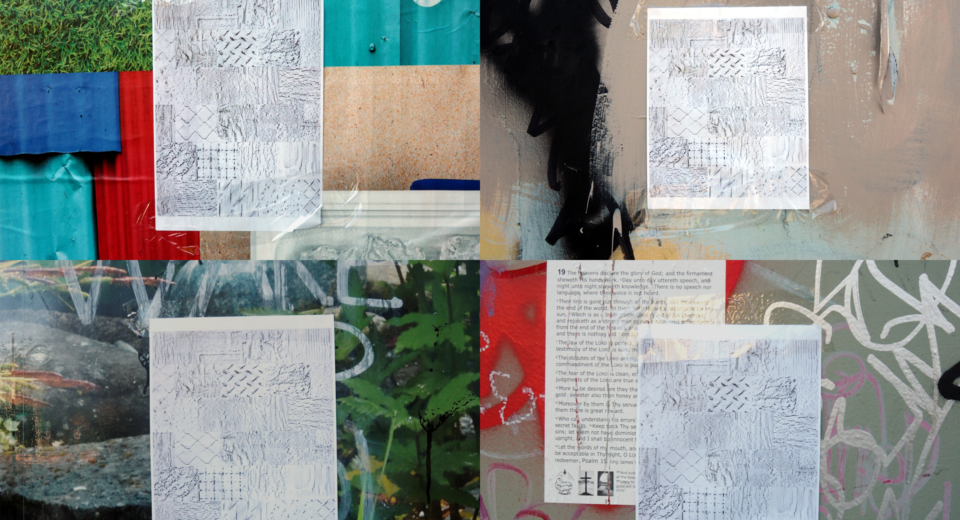We know technical proficiency can be hugely important to artists; that putting in the hours is vital to developing artists. But what about learning to work with ideas? How do artists-in-training become comfortable working and experimenting on the conceptual level?
The Visual Arts Summer Intensive (VASI) at Arts Umbrella is a three-week scholarship program giving young artists the chance to engage with contemporary art practices on a deeper level. A collaboration Vancouver’s Contemporary Art Gallery, students ages 15-19 work closely with professional artists and curators in a supportive studio environment. They explore a range of contemporary, gain invaluable studio time, and learn more about what it is to be a working artist today.
Simon Tanglao was a student on VASI in 2020. Here, Simon offers a thoughtful reflection on what it meant to take part in the program and how it broadens one’s horizons as a young artist.
VASI in Summer 2021 takes place from August 9-27. 2-21. The deadline for applications for VASI in 2021 is Monday, May 31. Learn more about the program and apply online.
How did VASI make you think differently about art?
VASI was one of many things in my life and that year that helped deepen and re-contextualize my relationship with art. I was already engaged with art, making art, thinking, reading about art and, prior to the pandemic visiting museums and galleries,. But VASI was one of the things that year – alongside Art Exchange with the Vancouver Art Gallery – that changed my relationship by allowing me to be more exploratory, focused on ideas and intention, more thoughtful, rather than rawly experimental.
It also broadened the possibilities for me as an artist and, while I wasn’t sure if it was something I wanted to pursue professionally and I’m still not sure, VASI helped expose me to the possibility of doing so.
How did you develop as an artist during your time on the program?
The environment that VASI created really pushed me. I think working with others and that dialog was important to my own development. The critiques and being vulnerable – but comfortable with that vulnerability and with the other participants – helped make me more comfortable putting ideas out into the world and working through them together. It was exciting to work in tandem with other young artists, responding to the same theme or prompt, but from entirely different contexts and seeing what happened.
As part of the program last year, students created work for a zine publication. Could you talk us through your final piece and the process that got you there?
It feels like a long time ago, but my final piece started when we were prompted to explore mundane details of our ‘studio’ spaces and examine what we had previously disregarded or even ignored. For me, that meant exploring texture, first through graphite rubbings, then drawings of my dining room where I was working from, then my neighbourhood, the back alleys, abandoned buildings and construction sites.
Texture is something that I’ve always been drawn to and I wanted to find a way of not just communicating, interpreting or responding to the urban landscape, but participating in it, which eventually lead to the final project’s installation of a photographed collage of graphite rubbings taken from my neighbourhood, then reinstalled in some of the same places.
How did you find working with the instructors and curators?
They were really good at pushing me just the right amount, to broaden and question why I was doing things in a gentle, encouraging, collaborative way. It was nice to see the work that goes on beyond the actual piece of art and I think the guests helped explore that. They were great at introducing, referring and exposing us to a wide range of art, artists and ideas, but also leaving room for dialog and questioning, encouraging our critical thinking and art skills.
I also liked that some of the guests were people of colour, which is something I would like to see reflected more in this kind of programming – that the contemporary art world isn’t exclusively white, or singular or monolithic, but diverse in artwork, people, and ideas surrounding it.
On your practice today: what are you working on? Has VASI influenced this?
I’m working a lot with text, partially stemming from a workshop we did last summer, and appropriated images or depictions of Asian masculinity and racism/stereotypes over time, as a way of examining my own identity and place. I’m also working with found objects, recycled, and sanitized masks and exploring printmaking – some of which is a continuation of work we did as part of VASI on ‘unusual’ materials, a workshop on source material vs inspiration, and looking at the everyday/mundane – some of the major themes over the three weeks. So yeah, many of these concepts from last summer have re-synthesized themselves and continue to inform my practice, research and writing, which is exciting and goes full circle, including with my studies at school.
How would you summarize your VASI experience?
Incredibly fruitful. I’m definitely still processing and returning to the work I did and what I learned. I think that being exposed to contemporary art from all sorts of perspectives (curatorial, artistic, logistical) has deepened my appreciation and enjoyment of it as an artist. VASI opened up a lot of possibilities that I’m thankful for, has continued to shape my practice, and will probably continue for a long time.
Find Simon’s work and more from last year’s scholarship program – part of an exhibition entitled In this space – here on the CAG website.
